



Ami Clarke, The Underlying at arebyte Gallery, London. 20 September – 16 November 2019.
When I enter the arebyte Gallery, I am immediately confronted with Ami Clarke’s Lag Lag Lag, a multi-screen installation displaying the structural model of BPA (Bisphenol A). This compound is a synthetic oestrogen which is a byproduct in plastic manufacturing processes. Its molecules have been recently found in water supplies around the world and are linked to hormonal imbalance. We are consuming molecules of plastic and are bodies are becoming such. BPA is beautifully modelled, a sculptural work in its own right, which is peacefully rotating on the screen. Underneath it, there is a looped script. I managed to grasp a sentence “Capitalism as a state of contingency becomes modus operandi.”
When Lag Lag Lag’s screen switches, it shows fluctuations in stock pice of the top 100 polluting companies in the world, the same big stakeholders who are responsible for over 70% of Earth’s pollutions. These statistics are accompanied by sentiment analysis of Tweets, also showing different datasets which are being analysed; emotional, joy, disgust, fear, sadness. Most often used in marketing for specific audience targeting, it indicates how our minute online actions can also be used to influence the already violent financial market.
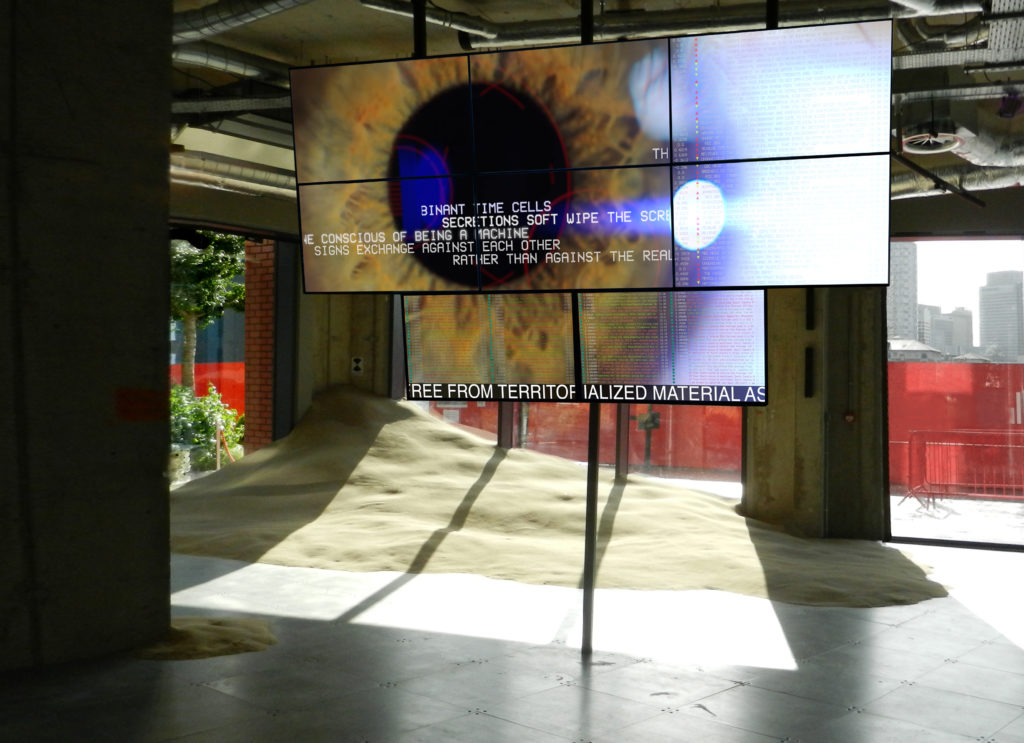
Clarke’s virtual reality work, Derivative, could as well be a digital trip to London in the aftermath of capitalism. Right after entering the experience, one can hear birds singing into the void and the wind carrying sand throughout the city maze. Its particles make up conical slopes in the corners between translucent buildings, which break up the surroundings into diamond-shaped fragments. I overcome them, slide a few inches above the ground by moving my thumb forward on the VR controller, which is increasingly making me lightheaded. The environment is blanketed with orange, eerie fog, reminiscent of the scenery from Blade Runner.
Further, the monotony of the landscape is interrupted by glimmering writing above the water surface. I set it as my destination, and move forward to it. The city is larger than it seems and it takes me a while to get close enough to read it. Still, I encounter no other living thing, only the lasers scanning through the buildings and my body, as if looking for sings of life. Eventually, I get to the end of the city, where I read the neon-green gothic script:
Welcome to the Offshore City
the city within the city
the tax haven
within the heart of Britain
Now I know what this place is and I dive further into the Offshore City, the tax haven for foreign investors, the headquarters for international companies, the slowly-beating heart of the world economy, supported by an invisible pump of the market. This time I am following a massive, burning sun and I encounter places modelled on London’s recognisable landmarks, such as Number 1 Poultry in Cheapside, an infamous suicide spot for depressed bankers, and, at the same time, one of the City’s oldest addresses, named “The Heart of the City”.
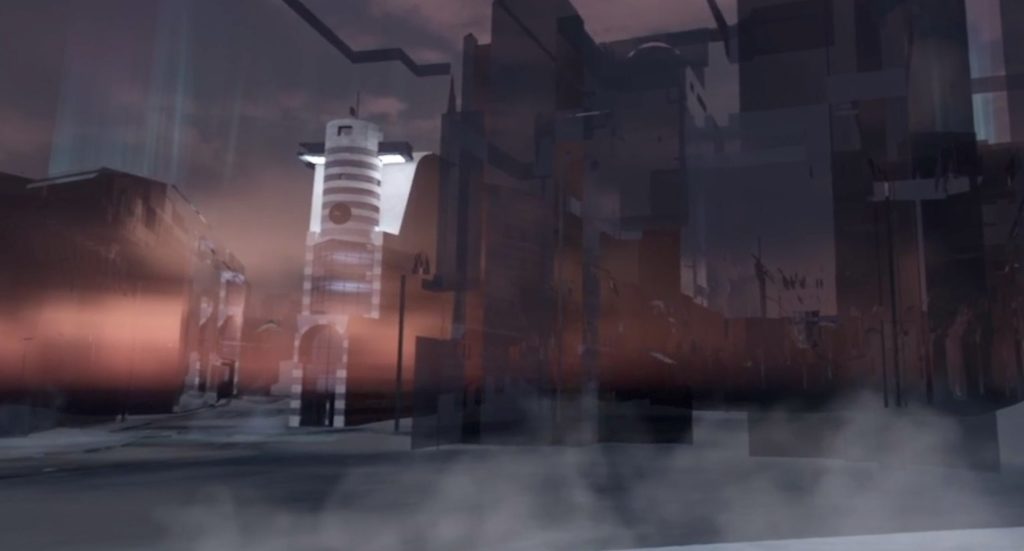
By using the lens of finance, Clarke points to both micro- and macro-scale of the environmental disaster and provides an unusual exploration of it. The accompanying rationalisation and monetisation feeds off the situation, and the capitalist system is shown as merciless and capable of using any opportunity to monetise on the dying planet. The lifeless scenery of Derivative directs attention to the inability of capitalist, finance-driven system to deal with its own creation in the light of planetary future.
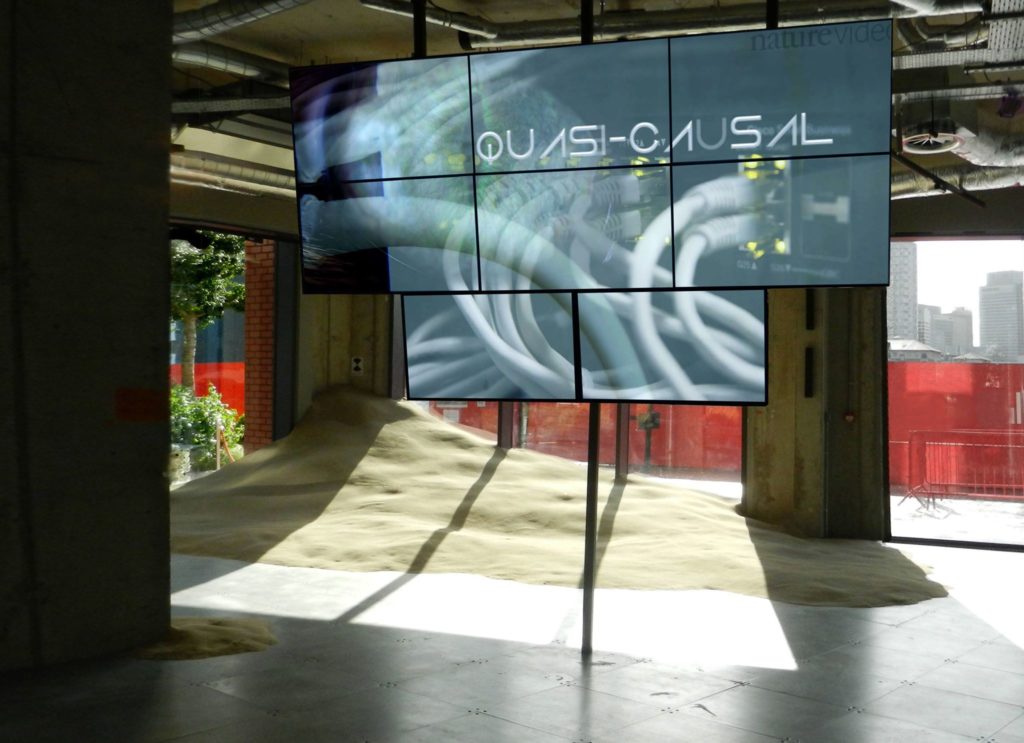
Only halfway through my time at arebyte, I realise that there are more pairs of eyes in the space than I thought. In three places in the exhibition space, there are installations made of prosthetic eyeballs, glued to the wall, their pupils fixated on various areas in the space. On the one hand, their synthetic, static gaze is reminiscent of the the all-seeing eyes of the CCTV cameras, on the other, they suggest disembodiment as in the sentiment analysis, whereby feelings are mechanically extracted and translated into data. Are we becoming cyborgs, or have we become them already?
The exhibition is a complex puzzle. It tackles difficult subjects, speculating in language, social media and economy. It is a powerful and slightly depressing, but intriguing picture. This dystopian vision of the future prompts questions; is it possible to re-imagine it? Can we come up with new narratives and stories and use speculation as a tool for revisioning the future? Where am I, as a viewer, positioned in the power relations imposed by the corporations and what freedoms do I have? At the time when the issues relating to the climate crisis are debated more than ever before, Ami Clarke’s The Underlying enters the conversation to problematise it through the exploration of technology, proposing a multilayered analysis of human and non-human agencies in the environmental catastrophe.
The above dystopian playlist was made in response to the exhibition. Recommended: listen while reading the review or on your way to the show.
The Underlying. Ami Clarke. Runs until Sat 16 Nov 2019.
https://www.arebyte.com/the-underlying
Venue: The Photographers’ Gallery, London
Links: http://thephotographersgallery.org.uk/furtherfield-in-residence
What do we find when we search our minds and the web for images of money and finance?
Coins and banknotes, trading floors with angry men shouting into phones, skyscrapers and stock charts.
The financial sector remains alienating and opaque to many people. We often struggle to think about how it works and how money moves. Making the invisible world of global finance visible and accessible is an urgent task and there are now many projects that are attempting to do just that.
Join us at The Photographers’ Gallery to build the ‘Activist Bloomberg terminal’ and to contribute to a mood board of future money.
Get involved in a weekend of image play, jargon-busting discussion, hacking and hands-on-exercises, to find out how we might unveil the financial sector. Together we will get involved with activities from open data mapping and visualisation, photography to computer games and digital art installation pieces to explore how money might be accurately represented in an era of digital payment via offshore tax havens.
This is part of Furtherfield’s Art Data Money programme of art shows labs and debates to build a commons for arts in the network age.
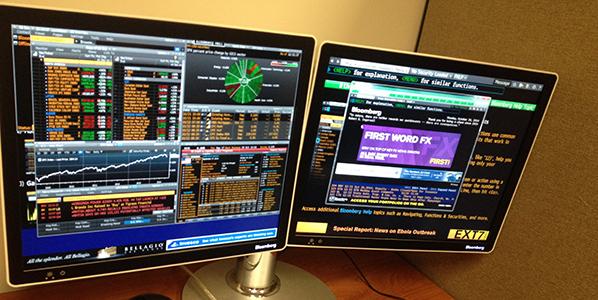
The Bloomberg Terminal is an expensive system that major banks use to get raw data and financial information. The Terminal is out of reach to most ordinary people, but can we create an open-source and open-access alternative Bloomberg to collect, distribute and visualise critical data on high finance? Let’s try!
Saturday 10.30 – 11.30: Brett Scott provides a recap of the first lab*
Open to all, an excellent introduction to the weekend activities.
Saturday 11.30 – 18:00 & Sunday 11:00 – 13:00: Discussions, guided group research, exercises and hands-on activities to familiarise yourself with finance and to build an ‘activist Bloomberg terminal’.
+ Read more about the first lab ‘Building the Activist Bloomberg to demystify High Finance’
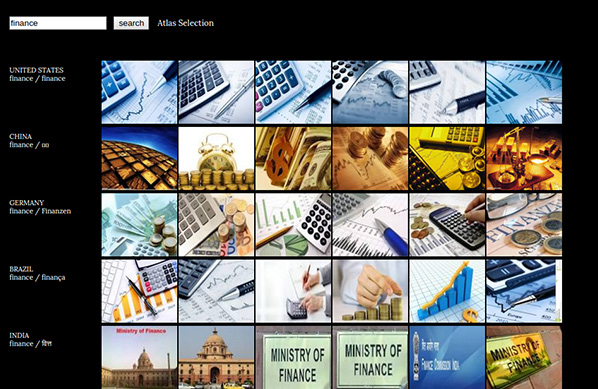
What do we find when we search our minds (or the web) for images of money and finance?
And does it matter if we don’t like what we find? We think it does. We assert that money is an emotional, irrational and mysterious medium of networked trust and that the more we can reclaim its images and associations for communal play and circulation the more likely we are to shape it to our interests. That’s why we are building a new mood board for future money.
Saturday 12:00 – 13:00: introduction to the image of money
Talk – Brett Scott (LSFA) introduces the topic with a broad sweep history of money from the primordial swamp to High Frequency Trading
Saturday 13.00 – 17.00: Money mood board workshop
Participants are invited to drop in and take a series of challenges to make, remix and reappropriate photographs – going out onto the streets, searching, interpreting and tagging photographs from some great digital archives and the World Wide Web to create a new image bank for money past, present and future – online and on the walls of The Photographers Gallery
Sunday 11.00 – 13.00: Money mood board workshop continued
Sunday 14.00 – 17.00: Sunday Workshop – Money Masks
Furtherfield take over our regular drop-in workshop for all ages. Visitors are invited to imagine the main players in the future of money and finance: mysterious, glamorous, fierce or ethereal, human or machine. Download, print, collage and assemble masks for a carnival of characters in the future of money.
Reclaim money for the good of us all, and have fun doing it, join us for a weekend.
All events are included with exhibition day pass charge, no booking necessary
LAB #2 in the Art Data Money series
A weekend workshop, led by Dan Hassan of the Robin Hood Cooperative, focusing on the political/social relevance of Bitcoin, blockchains, and finance. All participants will be given some Bitcoin.
ADMISSION FEE: £10 for one day or £15 for the weekend*
The weekend workshop will take a historical look at the political / social relevance of Bitcoin (“Breaking the Taboo on Money”) by looking at the history of technical and social inventions the came before it. I’ll then futurecast what this could mean for the future of p2p finance (blockchains, new social architectures and peer owned platforms with a mix of synthetic finance, peer-owned-banks) and place Robin Hood Coop within this future (“Breaking the Taboo of Financial Markets”).
It will include hands on activities on covering topics such as blockchains (actually running them and understanding them) as well as dissecting financial instruments – such as Robin Hood Cooperative has been doing.
Day 1 – Breaking the Taboo on Money (focus on Bitcoin and blockchain):
11.00 Group introductions
11.30 Bitcoin, blockchains, finance – a series of quick 5 minute 101 introductions
11.30 – 13.00 Using Bitcoins whilst expanding our understanding of why this is so groundbreaking
13.00 – 13.30 Lunch
13.30 – 14.00 Recap
14.00 – 17.00 (with tea breaks) tbc
Day 2 – Breaking the Taboo on Financial Markets (focus on Robin Hood’s activities on Wall Street):
11.00 Group introductions
11.30 Bitcoin, blockchains, finance – a series of quick 5 minute one-to-one introductions (+ quick recap from the previous days session).
11.30 – 13.00 Emergent workshop from constellation of interests of those who turn up
13.00 – 13.30 Lunch
13.30 – 14.00 Recap
14.00 – 17.00 (with tea breaks) tbc
Part of Furtherfield’s Art Data Money programme.

– If you can’t afford the entry price, get in touch anyway and we can figure something out.
– All participants will be given some Bitcoin
– The workshop runs across two days. Both days will be complementary, but will also be standalone. there won’t be too much duplication for those who attend both, but you won’t be left behind if you only attend one.
Pre-reading / listening: Listen to as much of this talk by Vinay Gupta as you can.
Robin Hood Asset Management Cooperative is a cooperative owned and run by its members. At the moment we have over 500 members from 15 different countries and together we manage assets of about half a million euros. In the two years we have been active, we have created over 100,000 euros to our members and to our common pool. We disrupt the ordinary flows of money, share the loot, and invest the profits in the production and protection of commons.
More info: http://robinhoodcoop.org/
Dan Hassan (UK) is a computer engineer active in autonomous co-operatives over the last decade; in areas of economics (Robin Hood), housing (Radical Routes), migration (No Borders) and labour (Footprint Workers). He tweets as @dan_mi_sun
LAB #3 in the Art Data Money series
A weekend workshop, led by Brett Scott and The London School of Financial Arts, exploring different approaches to unveiling the financial sector – from open data mapping and photography to computer games and digital art installation pieces.
The financial sector is notoriously opaque and alienating to many people. It is cloaked in different forms of invisibility – either through secrecy and concealment, or through complexity, jargon and obscurity – and we often struggle to conceptualise how it works and how money moves.
Making the invisible world of global finance visible is a highly important task and there are a range of exciting projects attempting to do just that. In this two day workshop, we will explore different approaches to unveiling the financial sector, from open data mapping and photography to computer games and digital art installation pieces. We will look at new attempts at visualisation and sonification, and consider how money might be accurately represented in an era of digital payment via offshore tax havens.
Day 1 will be focused on explore, mapping and demystify the existing financial sector.
Day 2 we will work towards building an ‘Activist Bloomberg’. The Bloomberg Terminal is an expensive system that major banks use to get raw data and financial information. The Terminal is out of reach to most ordinary people, but can we create an open-source and open-access alternative Bloomberg to collect and distribute critical data on high finance? Let’s try!
Part of Furtherfield’s Art Data Money programme.

Finance is viewed as a niche area characterised by numbers, complex graphs, and professionals wielding obscure techniques, but the sector is in fact underpinned by human relationships, power dynamics and philosophical concepts that we all intuitively understand. Realising this is a great step towards keeping the financial commons open. At its core The London School of Financial Arts is about experiential learning, offering fun, adventurous, and experimental courses that immerse campaigners within the financial dark arts.
More info: http://lsfa-hackspace.cc/
Brett Scott (UK) is campaigner, former broker, and the author of The Heretic’s Guide to Global Finance: Hacking the Future of Money (Pluto Press). He blogs at suitpossum.blogspot.com and tweets as @suitpossum
The end of boom and bust ended with the credit crunch. Following the global financial crisis of 2008, the Eurozone crisis has produced technocracy and poverty rather than democracy and wealth. Reactions to these failures of monetary policy are informed by technology as never before, from austerity being imposed thanks to an Excel spreadsheet bug to the rise of the anti-statist cryptographic currency of Bitcoin.
Against this backdrop of monetary failure and technological critique, _MON3Y AS AN 3RRROR | MON3Y.US is an ambitious online survey of net art depictions and critiques of money and its institutions curated by the pseudonymous curator “Vasily Zaitsev”. As well as the work from 70 or so artists invited to participate an open call for work increased the number of pieces in the show in total to around 200. I only consider the invited artists here, but the work in the open call section is well worth looking at as well.
The show web site has a simple HTML interface, starting with a single image and a pull-down menu of other works. Disable your pop-up blocker and you’re ready to start.
Miron Tee’s “Shame” is the image that fronts the show, an image of a dollar modified to show George Washington peering out nervously from behind the oval frame in the center.
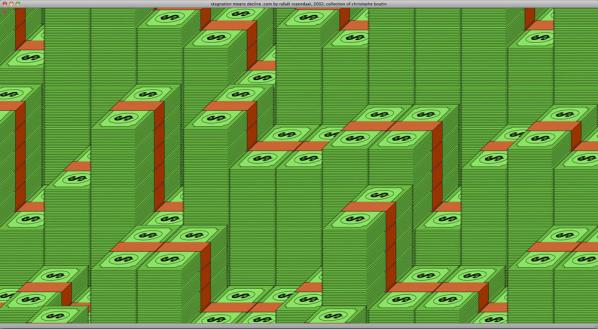
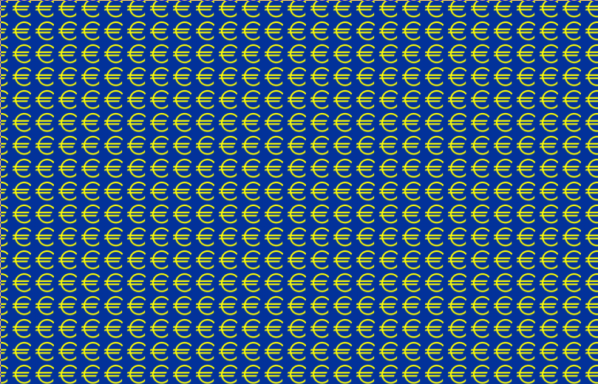
Dominik Podsiadly’s “Joy to ide” starts the pull-down menu with a flowing grid of Euro signs on a blue background to the sound of “Ode To Joy” playing backwards. It’s an all-over, closed temporal loop of the kind that animated GIFs exemplify and encourage, the Euro falling forever.
Nuria Güell’s “How to expropriate money from the banks” is a more direct action based work of culture jamming explaining presented in a well laid out document in the style of HSBC’s First Direct brand.
Paolo Cirio’s “Loophole for All” makes offshore tax havens, those loopholes in taxation regimes that allow corporations and the super-rich to avoid repaying society, available to everyone through a web site interface.
Rafaël Rozendaal’s “Stagnation Means Decline” is a screenful of geometric pixel-art dollar bill stacks that fill the screen with their edges only to be obscured by new columns like an economic game of Life.
Filipe Matos’s “Crash” is an undulating animated monochrome concrete poetry American flag with the stars made from the letters of “me” and the stripes as “you”.
Adam Ferriss’s “paper$hredder” is a Vimeo video clip of American dollar bills speeding by faster and faster until they dissolve into a blur.
Aaron Koblin + Takashi Kawashima’s “Ten Thousand Cents” is a composite image of a hundred dollar bill crowdsourced by paying people a cent to paint each piece through Amazon’s Mechanical Turk service.
Maximilian Roganov’s “When the Mao was small, he worked for CIA” is a looped animated GIF colour 3D scan of a dollar bill, polygonally glitched or possibly crumpled over time.
Dave Greber’s “Self Portrait With Dog” video is aptly titled, apparently taking place as the custom graphic on a Visa Mastercard.
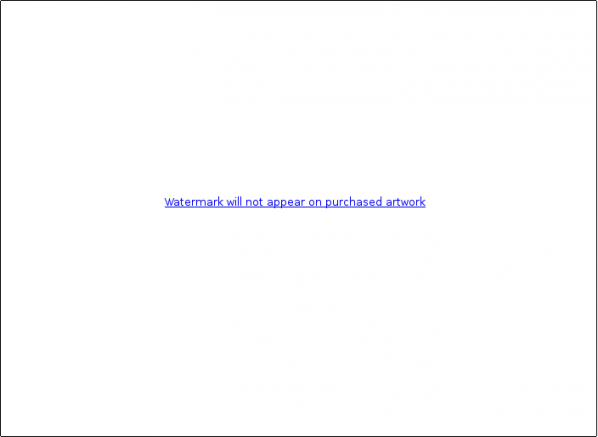
Agente Doble | UAFC’s “Watermark will not appear on purchased artwork” is a million dollar blank artwork if you email them and purchase it, otherwise it’s just a url on a blank web page.
JUST DO IT’s “Fifty Euros Inside/Fifty Euros Outside” are animated GIF loops of fifty Euro notes pulsating as if to sound waves on an oscilloscope.
Mitch Posada’s “$$$” is a Flash video of Silicon Graphics-era-style VR models of skeletons exploding and morphing into their constituent polygons while texture mapped with Deutschmarks.
Emilio Vavarella’s “Money Complex” is a tube map-style world map with banknote-collage continents and a key for numeric labels that can be zoomed in on by moving the mouse to reveal their often incongruous labels. It’s one of the more complex works in the show art historically and conceptually.
Lorna Mills & Yoshi Sodeoka’s “Money2” is a Vimeo video loop collage of roughly extracted elements from videos of commodity fetishism, fire and death.
Fabien Zocco’s “Cloud” is a generative composition of black dollar signs scattered up over a yellow background over time like a plume of smoke.
Jasper Elings’s “Territory” is an animated GIF loop of a dollar bill flag blowing in the roughly simulated wind on a white background. It’s not the only such piece in the show.
Robert B. Lisek’s “FuckinGooglExperiment” is online statistical analysis code that tries to correlate the change in Google’s stock price with changes in their PR strategy. It also uses the excellent Fluxus livecoding environment.
Alfredo Salazar Caro | TMVRTX’s “How to make money on internet remix” is a tightly tiled video loop of a rotating stack of dollar bills in a lava-lite-like flow of colour psychedelia.
Anthony Antonellis’s “How to make money on the internet” is simply that rendered block of spinning virtual hundred dollar bills, plucked from the era of RenderWare and VRML.
Gustavo Romano’s “Pieza Privada #1” is another piece of net art for sale at a specific price, with a carefully described contract and application form.
Tom Galle’s “One Million Dollars For iPhone” is an app available on the iTunes Store that allows you to count a virtual million dollar wad on your iPhone.
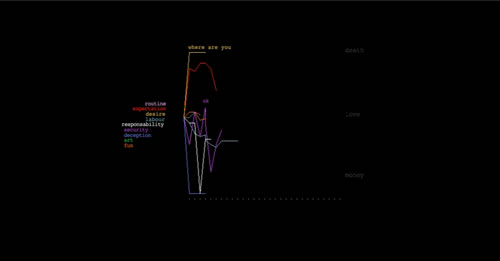
Geraldine Juarez’s “Love Not Money” tracks the associations of various words with “death”, “love” and “money”. I had to Google this one: it’s a Processing visualisation of a personal stock market tracking the artist’s conceptual assets over six weeks. I love it.
Nick Kegeyan’s “C.R.E.A.M. (Cash Romney Eat A Lot of Money)” is simple, direct and effective video burst of an American news interview subject morphing into a cloud of falling texture mapped dollar bills.
Dafna Ganani’s “Apple Dollar Explosion” is another descriptively titled piece, a Maya-looking apple texture mapped with a dollar bill spinning against a grey background then exploding into its constituent polygons.
Haydi Roket’s “$” takes a dollar bill portrait and literally deconstructs it by pixelating it in increasingly primitive ways, first as 4-bit grey patterns, then in monochrome ANSI characters, alternating to inverse video and changing the contrast to give a flickering effect.
Jennifer Chan’s “Infinite Debt” is a video of a twenty Euro not being dipped in batter and fried mixed in with a collage of clipart images and video on the cynical economics of contemporary art and consumerism.
Frère Reinert’s “Money as a waste of time” is a deliberate excercise in futility; a blurred, zoomed in silent video of the MacOS X SBOD on a white backdrop.
Cesar Escudero’s “Captura de pantalla 2013-03-08 a las 21.46.23” is a Mac OS X desktop image of a gas masked protester who appears to be reaching for a folder named “$$$$$$$”.
Jefta Hoekendijk’s “Money Is Data” is an animated GIF loop of a glitchily texture mapped virtual fifty Euro note in artificial colours.
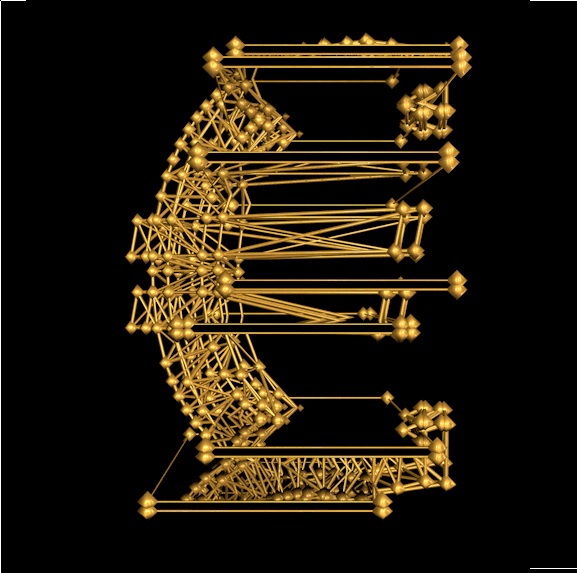
V5MT’s “¥€$ or N0T” is a rap video or Designers republic album cover-style animation of monumental metal morphing currency symbols made from struts and spheres like newton’s cradles or molecular diagrams.
Addie Wagenknecht’s “How To Make $$$$$” is a grid of money counterfeiting video tutorials, which are apparently a genre. Playing all at the same time they become an all-over aesthetic rather than incitement to a crime.
Gusti Fink’s “infinite loop of money drowning in water oil” is a slow, monumental simulation of a platinum visa card sliding into dark liquid that the camera pans over as if it were a sinking ship.
Marco Cadioli’s “You are here” shows globe and landscape maps constructed of dollar bills, with a pin or map icon to show your place in the economy.
Keigo Hara’s “Making Of Fake Bills” is more halftoned (or possibly shape grammared) dollar bills.
Jan Robert Leegte’s “Currency Graph” shows European flag yellow bars over a European flag blue gradient background. It’s a mutated and abstracted evocation of news information graphics aesthetics in CSS and JavaScript.
Ellectra Radikal’s “Disolved €uro” is a flickering autotraced, find edged and glitched animated zoom into a hundred Euro note that renders it spatial and architectural.
Paul Hertz’s “5,000,000$” it the purest glitch art piece in the show, rows of corrupted and miscoloured banknote imagery that looks like nothing so much as classic street art.
Aoto Oouchi’s “It’s all good” is an uncanny New Aesthetic 3d rendering of liquid or possibly mirrored texture mapped banknotes pouring from a wall.
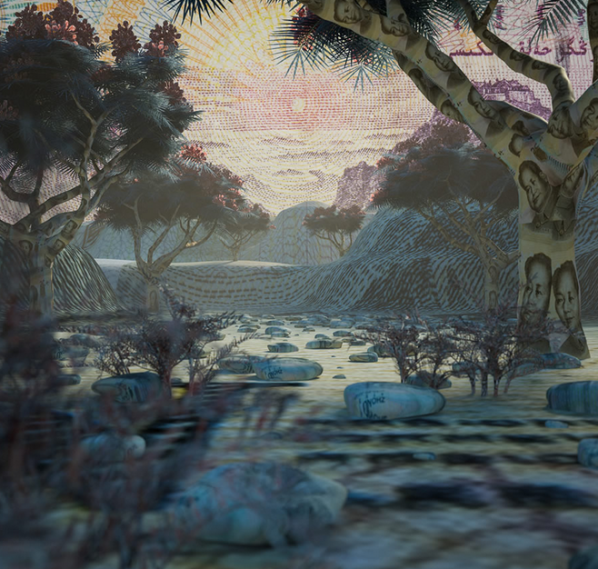
Kim Laughton’s “Landscape” is a rendered and collaged landscape of banknotes, resembling nineteenth century engravings of dramatic landscapes thanks to the inconography and texture of its source material.
Andrey Keske’s “Tell Me What You Want” is a search engine-style text box prompt that shows the economic coercion inherent in neoliberal use of technology by only allowing you to finish one word beginning with “M”.
A Bill Miller’s “3xpl0d3m0n3y” combines a grainy analogue glitch aesthetic explosion of a dollar bill into waveform stripes into a black space of drifting Matrix-green dollar signs.
Martin Kohout’s “Watching $100 Note Unveiling Video” has a ChatRoulette look, with the unseen unveiling causing a small smile to break out on the depicted viewer’s otherwise affectless face.
Marc Stumpel’s “pH0r 7|-|3 L0\/3 0Ph /\/\0|\|3’/” is a glitched and colourised monochrome television popular music performance from the age of mass media. Again I had to Google it but the song is ‘For the love of money’ by The O’Jays.
Benjamin Berg’s “$(0x24)” (the hexadecimal number that represents the dollar sign in ASCII) is a colourful and stripy glitch animation that resembles test cards, 8 and 16 bit graphics, and even woodcut as it breaks down.
LaTurbo Avedon’s “$$$$$$$$$$$$$$$$$$$$$” is an ambient modern html5 animtion of the avatar-artist reclining on money texture-mapped couches floating up and down a Google image search page for the word “millions”.
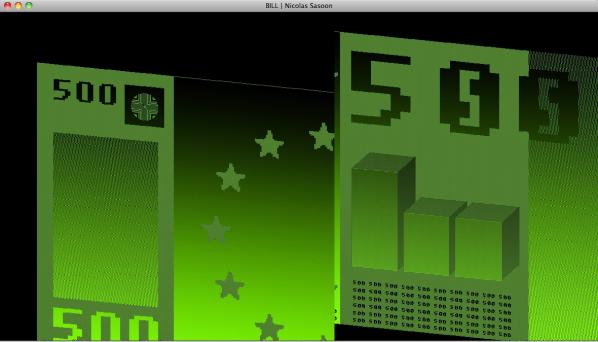
Nicolas Sassoon’s “BILL” is a flickering green screen terminal or slow scan TV-style rendering of a 500 Euro note that plays with the visual language of digital images: the letters and stars are highly pixellated but the backdrop to them is a smooth gradient.
Curt Cloninger’s “i want KANDY” loops images of a dancing sniper camouflaged figure montaged with dollar bills and fruit over a more slowly changing background collage of the american flag, a dollar bill, and fruit making a post MTV-styleguide image of the military-economic-entertainment complex.
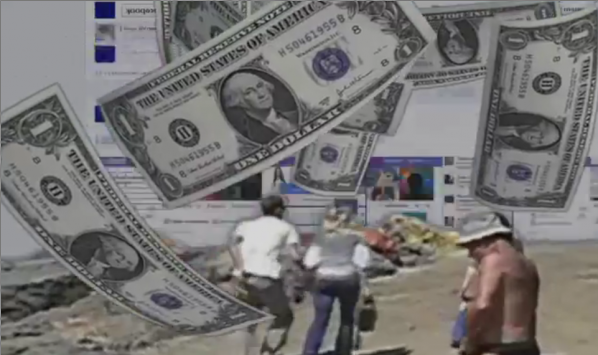
Systaime’s “ʞooqǝɔɐɟ Dollars” video portrays a world where curvily rendered dollar bills rain over an amateur video of tourists at a beach with a sky of quickly cycling Facebook pages.
Erica Lapadat-Janzen’s “Money Troubles” is a PhotoShop Pop Dada montage of exploitatively normative female beauty and monetary and drug excess that subverts the imagery of the fashion pages.
Milos Rajkovic’s “Mind Wheel” is a wonderfully Gilliamesque collaged animation depicting a mental wage labourer.
Émilie Brout & Maxime Marion’s “Cutting Grass” depicts the pointless and trivial labour that video games such as “The Legend Of Zelda force players to engage in for unrealistic rewards such as gold coins and rubies so they can get on with their quest.
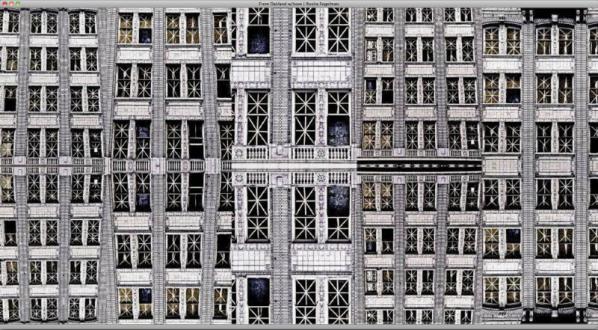
Rozita Fogelman’s “From Oakland w/Love” is a point-and-click kaleidoscopic archtitectural portrait of gentrified Bay Area architecture.
Georges Jacotey’s “am I enough political now” is a Chatroulettish video selfie of an augmented reality Euro flag and symbol drawing and dancing session.
Δεριζαματζορ Προμπλεμ Ιναυστραλια’s “Major Problem” is a rendering of a stack of dollar bills as seen through heat haze or under water, rippling and undulating against a white background.
Lars Hulst’s “0 €uro” is a rendering of a zero Euro note.
Nick Briz’s “a return to secularism” is a video documentary of twenty dollar bills being printed with the words “a return to secularism” flashing over it, framed by a repeated loop of the words “in God we trust” being crossed out on a dollar bill where they were added in the 1950s.
Jon Cates’s “MØN3¥-Δ$-3ɌɌɌØɌ” is a Classic Mac monochrome bitmap or fax aesthetic PDF essay for the show and an exposure of the print on demand economics of that essay in the same style.
León David Cobo’s “Conversation With Machine” has a 1990s broadcast graphic feel, showing the soundwaves of the feedback of a conversation with Siri asking it for money in Euro blue and yellow.
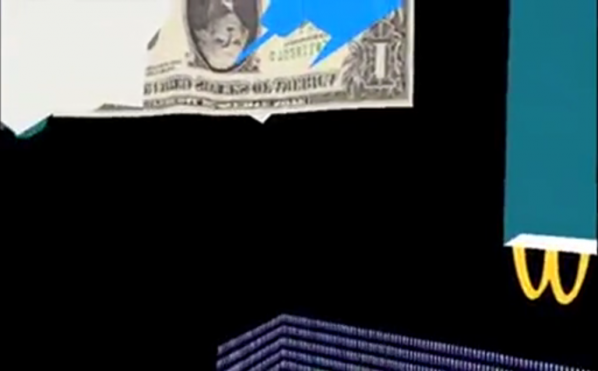
Guayayo Coco’s “Money | GLıɫcʜ ᴬᴺᴰ GLıɫɫɛʀ” is a video of a journey through a VRML-style virtual environment of discrete polygonal objects texture mapped with dollar bills, corporate logos and more abstract patterns with a radio channel-surfing soundtrack.
Vince Mckelvie’s “MONEY” is a reactive interactive deconstruction of a hundred dollar bill into a grid that reacts to the viewers’ mouse movement, revealing pulsating colours behind. It’s a good example of how suitable html5 is for this kind of thing.
Ciro Múseres’s “YOU HAVE WON” is a classic net.art style HTML bomb of overlaid text and links with content from financial web sites such as Barclays, Halifax and Santander that continuously adds and removes layers in different shades red, black, blue and green text to make new compositions.
Adam Braffman’s “Money Loading” is an animated GIF of the frame of a 100 dollar bill with a “Loading…” speech bubble in the centre. It makes the show’s themes of absent and delayed wealth more obviously explicit.
Rollin Leonard’s “Portrait of a NetArtist” is an two-frame animated GIF of the artist naked in the bath with bundles of fake hundred dollar bills with which they are lighting their cigar.
Thomas Cheneseau’s “100€ sequence” is a grid of glitched sections of a hundred Euro note that moires with colour as you scroll it. There’s a link to the facebook album that constitutes the actual work, and it works much better as a clickable album than as a static single image.
Yemima Fink’s “This is not money” is an abstract postmodernist collage of graphical quotations from the counterfeit-resisting elements of banknotes that is both witty and a very effective defamiliarisation of the iconography of banknotes and the power that they represent.
Mathieu St-Pierre’s “Untitiled” is a glitched jpeg of a dollar bill that in its straightforward application of glitch aesthetics makes the most direct link between them and the economic “glitch” of 2008.

Kamilia Kard’s “Amazon VIP girls” is the lone tumblr in the show, with an aesthetic that is either post-internet or pre-Google depending on how old you are applied to the supposedly perfect clothing models used by web sites.
José Irion Neto’s “Untitled” is a glitched banknote that turns JPEG artefacts into Klimt patterns.
There are definite historical trends and formal themes within the included work. Polygonal, texture-mapped, 90s-style VR-style objects that spin or explode. Net art and functional web sites that track or create financial and legal entities and transactions. Looped animations of textures, rendered flags, or video detournements. The imagery of accumulation, consumption, and destruction, always ironically. Imagery and symbols presented in simple loops fast or slow for contemplation. Graphs and maps of real and imagined economic signifiers.
In terms of genre, _MON3Y AS AN 3RRROR | MON3Y.US includes classic VR and video art, more modern GIF loops, textual and institutional net.art, glitch art, even some New Aesthetic. The language of computer graphics, texture mapping and polygons, allows the imagery of banknotes to be defamiliarised and deconstructed. Less often, personal experience and iconography displace the cultural imagery of wealth, consumption and debt.
This historical, formal and genre coverage of the variety of artworks included in the show comprehensively illustrates the chosen theme of “money and error”. This creates its own genre and lineage for the included artworks, which gain by comparison to their newly identified peers. They also contribute to the social and economic critique of the show. It’s a very successful balancing act, which the simple interface and presentational strategy of the show’s curation are key to achieving.
_MON3Y AS AN 3RRROR | MON3Y.US is an almost overwhelmingly successful in its comprehensive review of net art’s critical depiction of and engagement with money. By taking a technologically simple but historically, conceptually and logistically ambitious approach to net.curation for net.art it demonstrates the effectiveness and lasting value of net art’s contributions in this area and the power of online thematic curation to draw together and contextualise this value without giving in to the often perceived need for offline institutional underwriting.